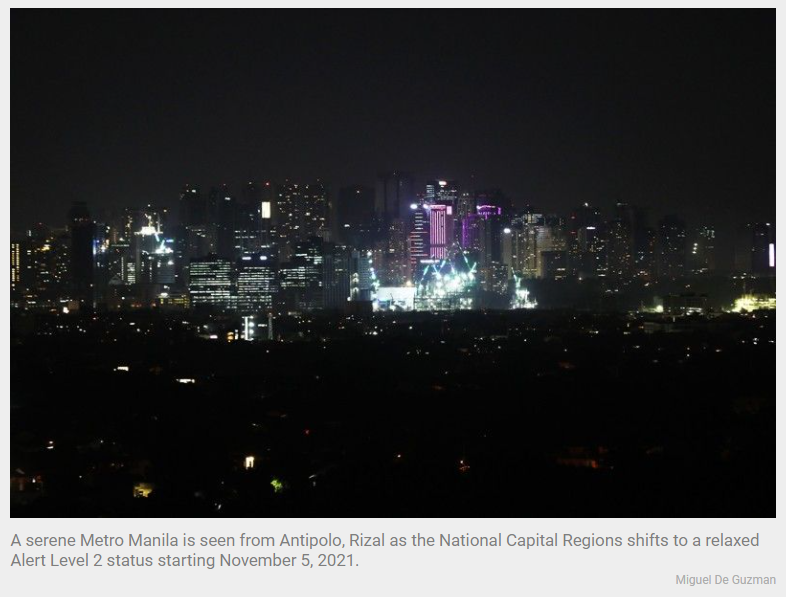Philippines: Slower Q3 growth predicted
MANILA, Philippines — The country likely posted positive economic growth in the third quarter although at a slower pace after emerging from the pandemic-induced recession in the second quarter, according to private economists.
Security Bank chief economist Robert Dan Roces said the country’s gross domestic product (GDP) likely expanded by 10.4 percent in the third quarter, slower than the 11.8 percent growth in the second quarter.
“While the third quarter is expected to be slower than the second quarter sequentially, the fourth quarter may take off from gains made by the beginning of the quarter,” Roces said.
Roces, however, attributed the positive economic performance to the stable vaccination pace and supply, resurgence of trade due to global recovery, positive loan growth and the sustained uptick in remittances from overseas Filipino workers.
He also expects bigger government spending prior to next year’s elections as well as sustained expansion of the purchasing managers’ index in the next three months amid looser restrictions and the reopening of the economy, resulting in emplyment uptake.
“Thus, the upper end of the government’s growth target is doable,” Roces said.
Economic managers, through the Development Budget Coordination Committee (DBCC), slashed the GDP growth target to a range of four to five percent instead of six to seven percent to reflect the impact of stricter lockdown measures aimed at curbing a Delta-driven surge in COVID cases.
Michael Ricafort, chief economist at Rizal Commercial Banking Corp. (RCBC), said the country’s GDP likely expanded by 6.5 percent year-on-year and by 3.4 percent quarter-on-quarter.
“GDP growth for the third quarter could quantitatively ease year-on-year from 11.8 percent in the second quarter, but still positive at higher single-digit levels, largely due to fading low base effects. Thus, GDP growth of four to five percent for full year 2021 could be achieved, with the view that the fourth quarter GDP could grow by about five to six percent, also in view of fading low base effects,” Ricafort said.
Ricafort said preparations for the Christmas season and election-related spending may further boost consumer spending and the whole economy in the coming months.
Alvin Arogo, economist at Philippine National Bank (PNB), said the country’s GDP likely grew at a slower pace of close to 5.8 percent in the third quarter due to the more stringent pandemic restrictions.
“This is along the mid-point of our 4.2 percent year-on-year downside estimate and 7.5 percent baseline forecast. Without the Delta variant-induced lockdowns, we believe actual GDP performance would have been closer to our baseline estimate,” Arogo said.
Arogo said the reopening of the economy would boost consumer spending during the Christmas season.
“In addition, we believe that the reopening of the economy this quarter will allow for consumer spending to rebound in time for the holiday season,” Arogo said.
Ayala-led Bank of the Philippine Islands (BPI) expects a GDP growth of 5.6 percent from July to September.
“We are looking at 5.6 percent year-on-year growth based on sustained improvements in mobility, improved demand for energy, full recovery of pre-pandemic imports and the ramp up in remittances. Hopefully Delta’s hit on our economy will not be as pronounced as it had been with our Southeast Asian neighbors,” BPI lead economist Jun Neri said.
On the other hand, UnionBank chief economist Ruben Carlo Asuncion said the country’s GDP likely expanded by 4.6 percent in the third quarter as the reimposition of the enhanced community quarantine in the National Capital Region (NCR) and nearby areas dragged the economy in the middle of the quarter.
“Third quarter began with a more upbeat July as more easing of restrictions were done. However, the August re-imposition of the ECQ once again became a drag to the fragile recovery. The shift to the alert-level type quarantine status in the NCR was crucial to the slight rebound in September causing economic activity to subsequently rise. Nevertheless, domestic demand was still subdued with much restrictions still in place,” Asuncion said.
Asuncion expects a better fourth quarter as the NCR shifted to Alert Level 2 from Nov. 5 to 21 amid the continued decline in COVID cases.
Source: https://www.philstar.com/business/2021/11/08/2139681/slower-q3-growth-predicted


 Thailand
Thailand




